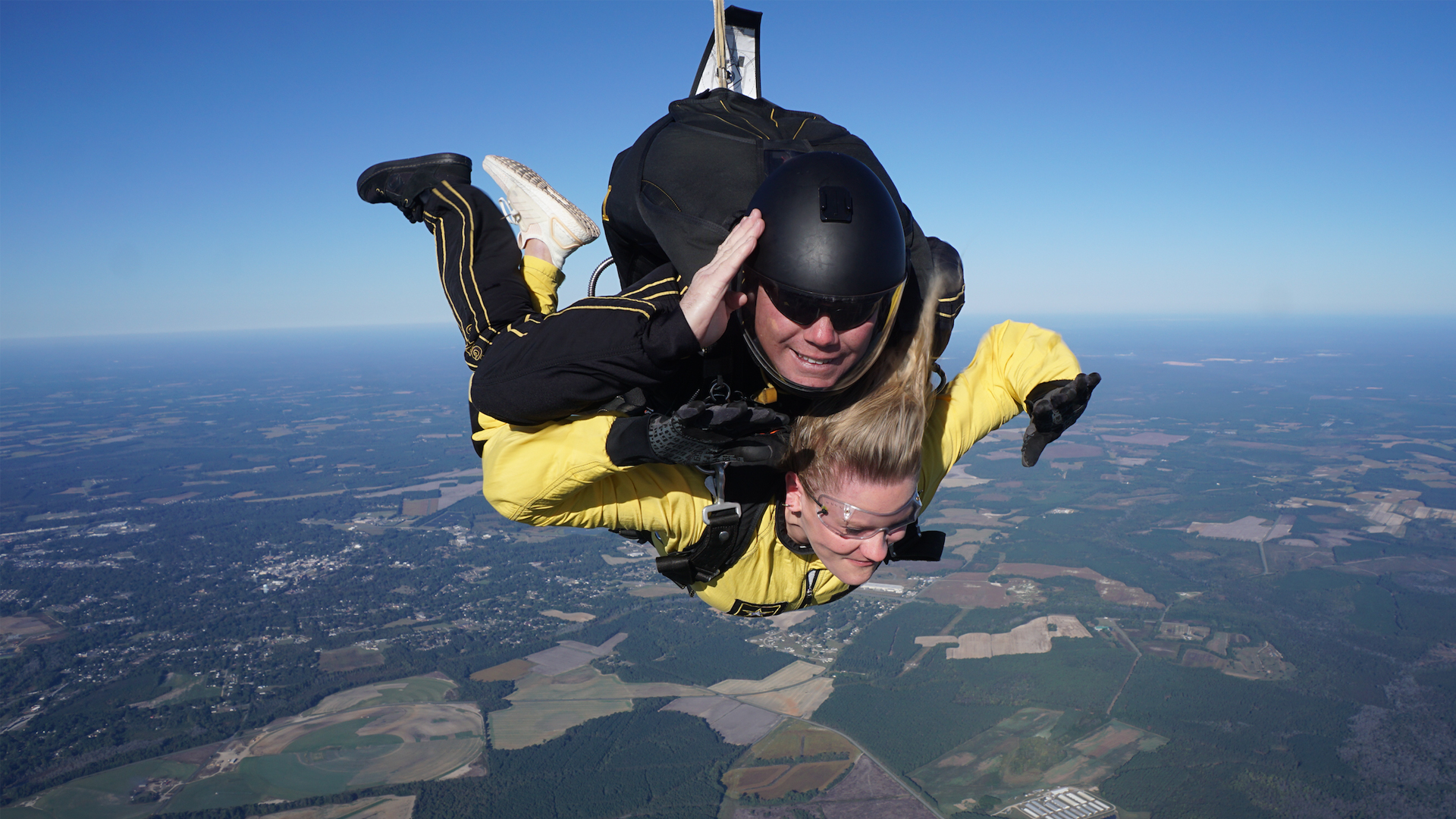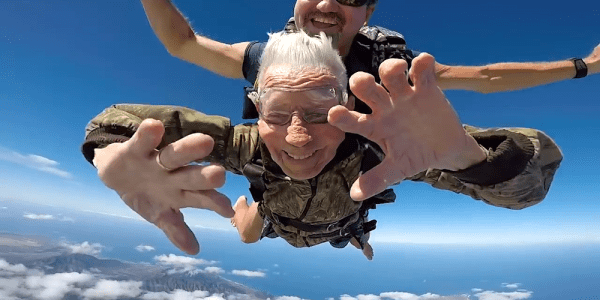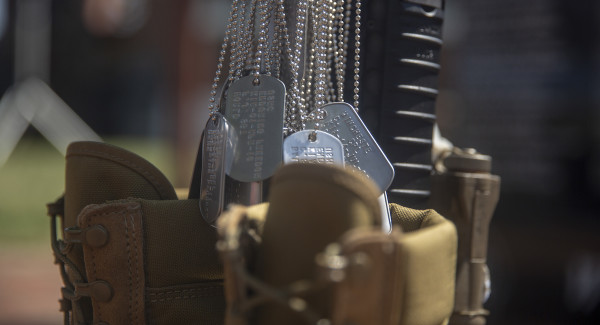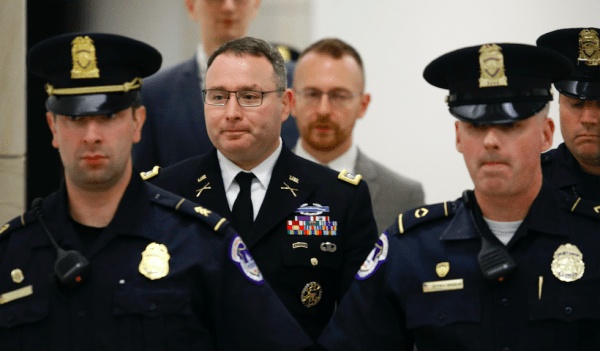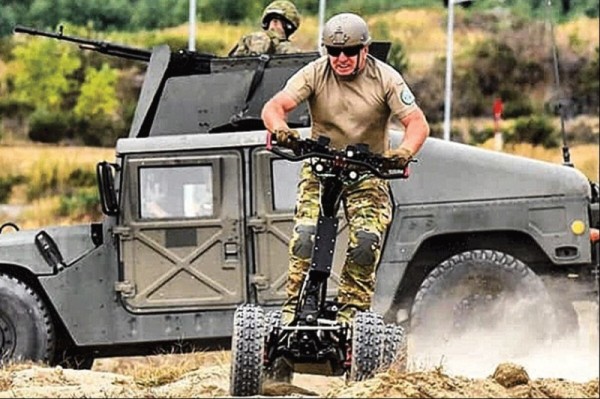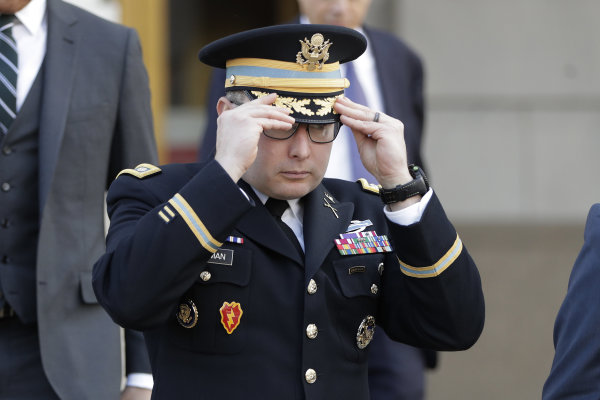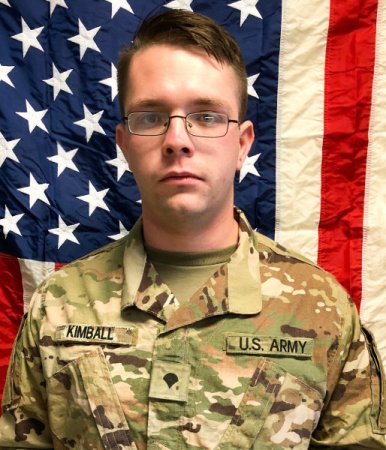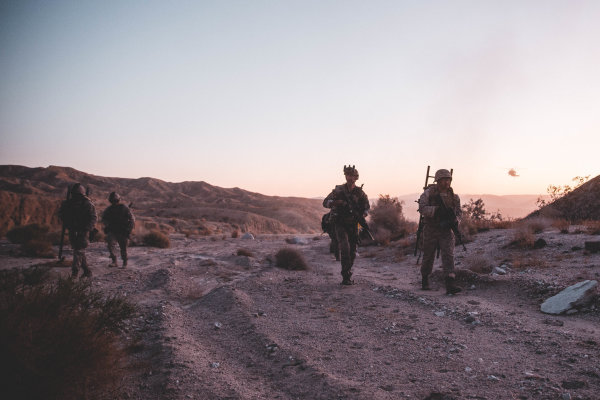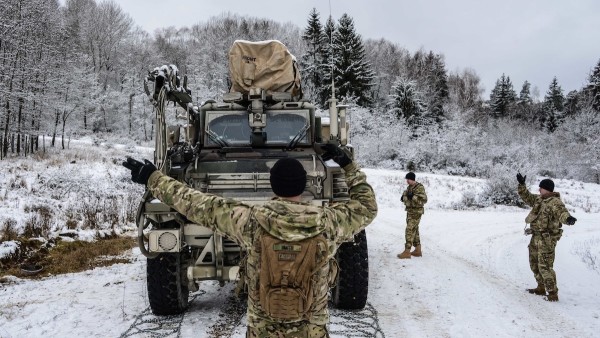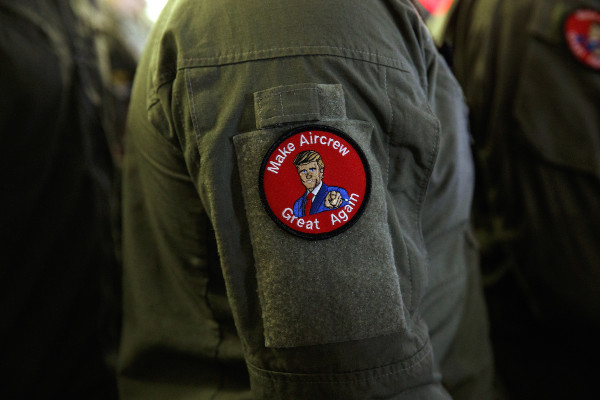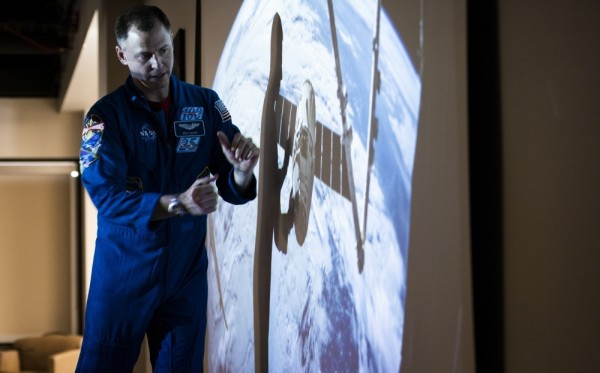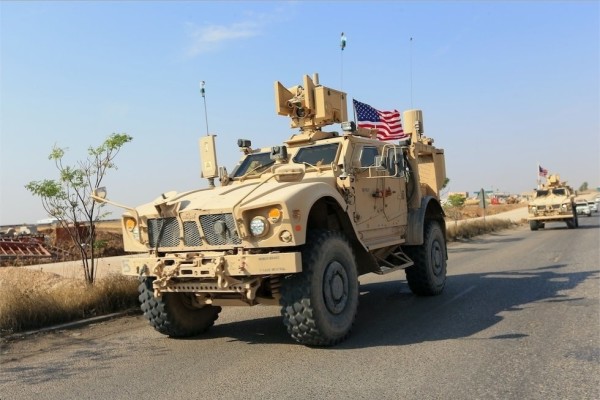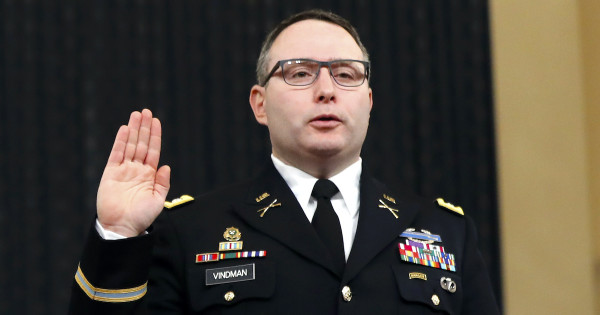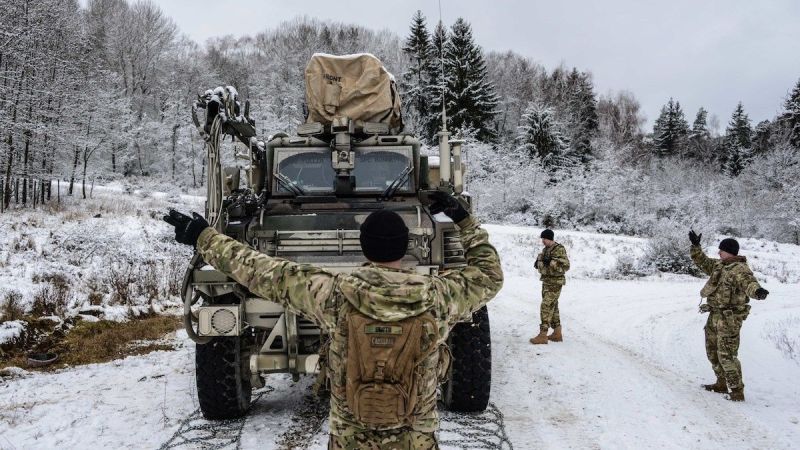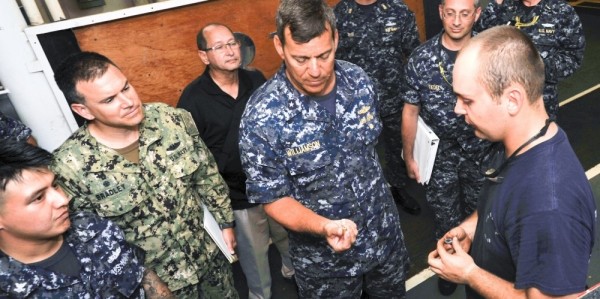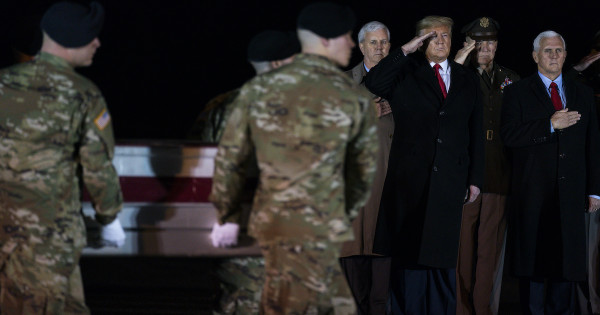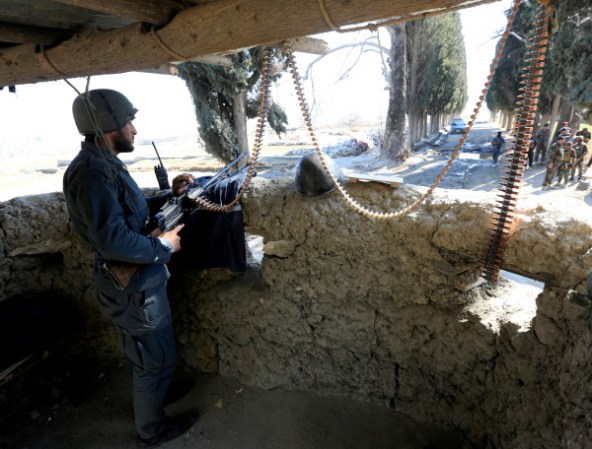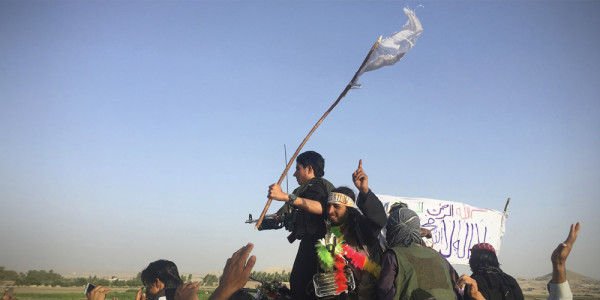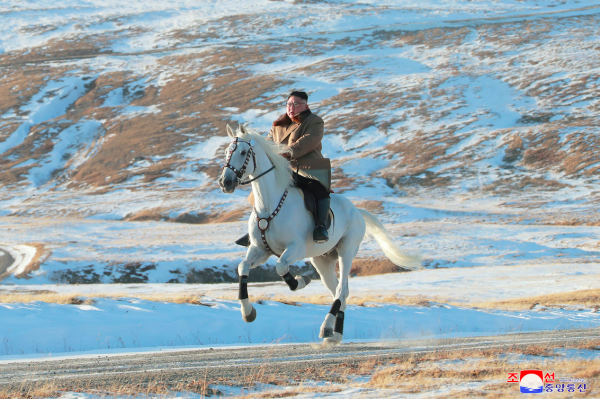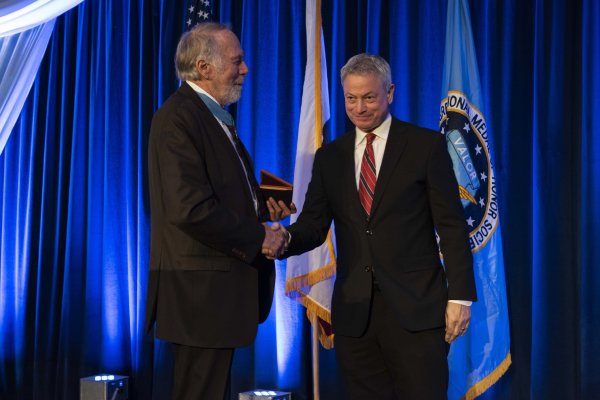If you’re going to jump out of a plane, you might as well do it with the best of the best. At least that’s what I told myself as I pulled into the parking lot next to the hangar for the Army’s Golden Knights.
To call the Golden Knights merely a parachute team feels like an insult. They are the crème de la crème of Army parachutists. Their job, literally, is not only to jump out of planes regularly but to do so in global competitions, conducting intricate demonstrations with such extremely perfect execution that it almost seems other-worldly.
Last week while visiting Fort Bragg, North Carolina, I made my way roughly an hour from Fayetteville to Laurinburg driving along mostly country roads. The closer I got to the Golden Knights hangar, the more open fields I passed. As you might expect, the hangar is not surrounded by much. It was a beautiful clear day — ideal weather for jumping out of a perfectly good airplane.
I wouldn’t say I was overly anxious. I was reasonably anxious (and incredibly excited) given what I was there to do. I’d never gone skydiving before, though I had tried once in college; a few friends and I went into Dallas to skydive, but it was canceled the day of because of bad weather. If I was willing to trust a random company to ensure I didn’t fall to my death, I told myself, then jumping with the U.S. Army would be a breeze. Especially when you consider that the Army led the U.S. military’s development of airborne units ahead of World War II, paving the way for the service’s first airborne assault in November 1942, a year-and-a-half before the Normandy airborne landings.

It also helped that for two days before the jump, I was at Fort Bragg with paratroopers in the 82nd Airborne Division. To soldiers who are airborne qualified, tandem jumping must seem like an absolute walk in the park. They are, after all, personally responsible for getting themselves safely to the ground, and that certainly wasn’t going to be my experience. Even the most junior U.S. Army paratrooper must first pass an intensive three-week course, which is only completed when the soldier completes five jumps at 1,250 feet from a C-130 or C-17 aircraft, at which point they earn their Parachutist Badge, often called “jump wings.”
What was I so nervous about? Some asked. My answer, of course, was what if the parachute doesn’t open? But as one officer jokingly told me, if the parachute didn’t open I’d have the rest of my life to figure it out. (Airborne humor, I’m told.)
My tandem instructor, Sgt. 1st Class Rich Sloan, greeted me when I arrived at the hangar and we immediately jumped into the classroom portion of the day, which included everything from how to board the airplane to what to do when it was time to get hooked up to your partner — a critically important piece! Even for a tandem jump there were a lot of things to learn and keep track of: arch my back the second we jumped; keep my thumbs in the harness until he tapped my arms; lift my knees to my chest as we’re coming in to land. The class also included a video which essentially boiled down to: Jumping out of an airplane is certainly an interesting choice you’re making, and you could be injured, so just know that’s what you’re signing up for.
All throughout the instruction — hell, throughout the entire day — Sloan seemed to be on top of the world. The man is a real-life energizer bunny, which I later found out is part of being a tandem instructor.

“We try to keep it light,” he said as he picked out two different sizes of jumpsuits for me to put on over my clothes. “We understand you’re nervous, we understand it’s your first time doing it and jumping out of a plane is not ordinary.”
“No,” I said, “it really isn’t.” But Sloan assured me that, believe it or not, even after 1,000 jumps, “people still get nervous sometimes.” Sloan, who joined the Army as an information systems analyst in 2003 and has been with the Golden Knights since 2010, is far past that benchmark. He’s jumped over 6,000 times total — 6,233 to be exact, but who’s counting?
As you may imagine, I was listening very carefully to every single thing he told me. Mostly my job was to listen to him, which I was more than happy to do.
After I was suited up in a black-and-gold jumpsuit with my harness on, we made our way to the plane along with the videographers who were also jumping with us, Sgts. 1st Class Jimmy Hackett and Keith Pierce, and four other soldiers who were preparing to graduate training and officially become Golden Knights just days later.

As the plane took off from the runway I felt good and surprisingly calm, until the four trainees got ready to jump and Sloan suggested we move closer to the door to watch. The door that was going to be open. To the sky.
Now is probably a good time to mention that I’m terrified of heights. As in, I cried once as a kid because the stairs to a waterslide were so tall. It took me 10 minutes before I was able to let go of the railing and actually go down the slide. But sure, sitting in front of an open door on a plane that I would soon be jumping out of — no problem!
Where I was anxious, the soon-to-be-newest Golden Knights were laser-focused. As cool air roared through the open door, they were business as usual, checking each other’s parachutes one more time. Before I knew it they were leaping out the door, one after the other. They made it look easy, which is probably thanks to jumping anywhere from five to 15 times a day during training. I was just hoping I wasn’t about to make it look difficult.
And then it was my turn. Sloan hooked us together, tightened my harness, and asked to make sure everything felt okay. There’s no way for a harness to feel comfortable, but I honestly didn’t want it to; I wanted it to feel extremely tight and secure, given that it was holding me to him — Sloan, who had the parachute that I was counting on to see me safely to the ground. When I nervously double-checked with him that I was in fact hooked securely to him, and the parachute, he very patiently reassured me that yes, I was.

It was around this time that I started to realize “holy shit this was actually about to happen,” which must have been very clear from my facial expression because Pierce, one of the videographers, told me to breathe in through the nose, out through the mouth. Sloan and I stood up and walked towards the door to the plane. I couldn’t tell you where Hackett and Peirce were at that point based on memory alone, but the video we watched afterward shows them hanging off the side of the aircraft waiting for us to jump; just casually clinging to the side of a plane as it soared through the sky.
Once we got to the edge of the door I almost instinctively closed my eyes. I tried to remember to breathe as Pierce told me. Slowly in through the nose, out through the mouth. There was no going back at that point, and there’s something about knowing that that brings a sense of calm. What was I going to do, not jump? Please.
I felt us rock back and then we were in the air, and I was opening my eyes, and going back and forth between not being able to say anything, and screaming “oh my God!” (The guys later joked that I must have said it dozens of times, but I figured it was probably hundreds.) Sloan tapped my arms, meaning I could let go of the harness straps on my shoulders, and I let my arms out. Hackett and Pierce were falling around us, recording from the GoPros strapped to their helmets.

I’d been told by some of the soldiers at Fort Bragg that I would be so high up in the air it wouldn’t seem real, and at that moment I knew what they meant. When you’ve never been falling through the air thousands of feet above the ground, you almost can’t wrap your mind around what you’re seeing when you do it for the first time. In what was actually probably less than 30 seconds, but what felt like minutes, Sloan activated the main parachute.
At that moment it made sense why the Golden Knights would want to become Golden Knights. Doing that every day? Free-falling at 120mph, feeling like you’re literally on top of the world? There are worse ways to spend your time, and there are certainly less fun jobs in the Army.
Hackett and Pierce were already on the ground filming the landing, which was much smoother than I’d originally expected. But honestly, why expect anything less when you’re jumping with someone who’s done it more than 6,000 times?
Once we were standing up, Hackett asked me what I thought of the experience. An easy question, because I was only thinking one thing: When can we go again?
More great stories on Task & Purpose
- Why this Air Force commando who fought with a shot lung doesn’t count deployments
- Soldier who helped secure Kabul airport with Toyota technical traded for dip gets promoted
- A paratrooper turned movie advisor explains why shootings like Alec Baldwin’s shouldn’t happen
- Air Force medical group commander fired after less than 4 months on the job
- Meet James Kilcer, the Marine veteran seen disarming a robber in a viral video
- Kill the CAC? Why some people really want the military’s ID cards to go away
Want to write for Task & Purpose? Learn more here and be sure to check out more great stories on our homepage.

